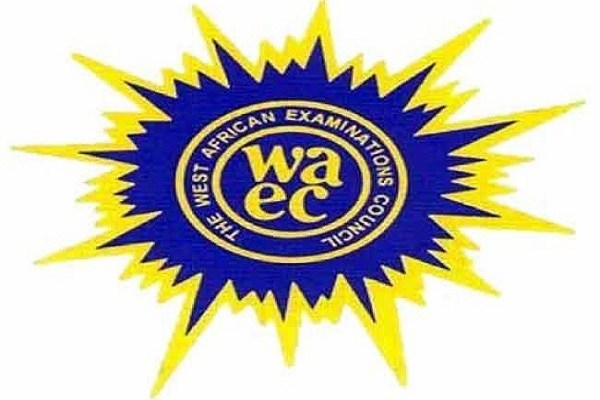Waec

ECONOMICS-ANSWERS!
Economics-Obj
1DBDDACACBA
11CCACDDCBDC
21BDBCBBCBBC
31AABCACCCAC
41BBDBDCBDBC
Completed!!!!
—————————–
(1)

(2)



(3ai)
Money cost is the actual amount of money spent on a good or service, while opportunity cost is the value of the next best alternative forgone in order to obtain that good or service.
(3aii)
A normal good is a good for which demand increases as income increases, while an inferior good is a good for which demand decreases as income increases.
(3b)
(i) Individuals: The scale of preference assists individuals by allowing them to rank their wants in order of importance and allocate their resources accordingly. This ensures that they spend their limited resources on the most important wants first.
(ii) Firms: The scale of preference helps firms in determining which goods and services to produce first, based on consumer demand. This ensures that they produce goods that are most in demand, maximizing profit.
(iii) Governments: The scale of preference assists governments in allocating resources to the most important needs first, such as infrastructure, healthcare, and education, in order to maximize the welfare of society.
(4a)
Economic system refers to the structure and organization of production, distribution, and consumption of goods and services within a society.
(4bi)
Aim of production:
(i) Capitalist Economy: In a capitalist economy, the primary aim of production is to generate profit. Private individuals and businesses own and control the means of production, such as factories and businesses, and their main objective is to maximize their profits and wealth accumulation.
(ii) Socialist Economy: In a socialist economy, the aim of production is often centered around meeting the needs of society as a whole. The state or collective ownership controls the means of production, and the focus is on providing goods and services that benefit the entire population rather than solely pursuing individual profits.
(4bii)
Consumer sovereignty:
(i) Capitalist Economy: In a capitalist economy, consumer sovereignty is a fundamental principle. Consumers have the freedom to choose and influence what goods and services are produced through their purchasing decisions. Businesses respond to consumer demand and compete to attract customers by offering products and services that cater to their preferences.
(ii) Socialist Economy: In a socialist economy, consumer sovereignty is typically more limited. The state or central planning authority often determines the production and distribution of goods and services based on collective interests and social priorities. While consumers still have access to goods and services, their choices may be constrained or influenced by the state’s decision-making processes.
(4biii)
Competition:
(i) Capitalist Economy: Competition plays a crucial role in a capitalist economy. Multiple private individuals and businesses operate within the market, striving to gain a competitive edge and maximize their profits. Competition fosters innovation, efficiency, and productivity, as businesses seek to attract customers and outperform their rivals.
(ii) Socialist Economy: Competition is less prevalent in a socialist economy, particularly in sectors where state ownership and central planning dominate. The priority is on cooperation and collective goals rather than competition among businesses. Some socialist economies may still allow limited competition in certain areas to spur innovation and efficiency.
(4c)
(i) Fixed Supply: Land is a finite resource, and its supply cannot be increased. The quantity and quality of land available for production remain relatively constant over time.
(ii) Immobility: Unlike other factors of production such as labor and capital, land is immobile. It cannot be easily relocated to different areas or transferred between industries. The location of land is an inherent characteristic that influences its value and productivity.
(iii) Heterogeneity: Land exhibits heterogeneity in terms of quality, fertility, natural resources, and geographical features. Different parcels of land have varying levels of suitability for specific purposes such as agriculture, mining, construction, or residential use.
(5a)
A sole proprietorship is a business model where an individual is an owner as well as the operator of the business Whereas A partnership is a business model where two or more persons agree to carry on business and share profits and losses mutually.
(5b)
(i) Sole owner of the business
(ii) Unlimited liability
(iii) No legal entity
(iv) Sole decision maker
(5c)
(i) Generation of Income through Public Issue of Shares: One of the major channels through which Public Limited Companies generate capital is y selling shares to the public.
(ii) Security for Loan Advancement: Public Limited Companies can obtain and secure loans using the assets of the company as security as opposed to using the personal assets of the members.
(iii) Spreading Risks of Ownership: Because a Public Limited Company allows for pubic and unlimited membership, the risk of ownership is then spread amongst many people as opposed to being centered on a few as in the case of a Private Limited Company.
(iv) Separate Legal Identity: A duly incorporated Public Limited Company has an identity entirely different from that of the members. This means that the company is capable of independent existence and can enter into contractual transactions, acquire and own properties, and has the legal capacity to sue and be sued in its own name.
(6a)
Location of industry may be defined simply as the sitting or establishment of a firm or industry in a particular place. An industry may be established either by individuals or government, either for economic or political reasons
(6bi)
Raw materials: Cement producing industries should be located close to sources of raw materials to reduce cost of transportation. Perishable goods like fruits, palm oil industries, etc should be located near their raw materials
(6bii)
Market: There should be ready market for the products of any industry to be sited in a place. Fragile goods like glass, bulky goods like cement and other perishable goods should be located near the market. Such industries located or directed towards the market are called market- oriented industries.
(6biii)
Government policy: Government can encourage the location of industries through certain policies like: Direct participation in setting up of industries. Creation of industrial zones in the country Provision of infrastructures like electricity, pipe-borne water, roads and tele- communications.
(6c)
(i)It encourages development: The growth of industries leads to an increase in production of goods and services.
(ii)Emergence of subsidiary firms: As major firms concentrate in one area, other subsidiary service firms that assist those major firms in the production of goods usually emerge.
(iii)Generation of employment: The concentration of many industries in an area leads to the creation of many job opportunities
(8a)
embargo is a trade restriction, typically adopted by a government, a group of countries or an international organization as an economic sanction.
(8b)
(i) Imposition of tariffs is a source of revenue to the government and newly established companies are protected from competition from foreign companies.
(ii) If a country imports all sorts of goods without checks, it will suffer from Unfavourable balance of trade and payments and dumping of goods, especially in non industrialized country will occur if the country allows free trade to happen.
(iii) To check con-sumption pattern: If all sorts of goods are allowed to come into the country, the citizens will develop uncontrollable appetite for foreign goods and the rich are made to pay higher rate as tax than the low income earner.
(8c)
(i) It limits the level of variety of goods available in the country and other countries may also retaliate.
(ii) It may lead to increase in the price of goods especially if the tariff is too high.
(iii) Fall in the standard of living due to high taxes on imports and very protection of domestic industries may lead to inefficiency.
RECOMMENDED TOPICS
- JAMB 2025 UTME/DE registration document – step-by-step on how to apply for UTME and DE

- JAMB postpones 2025 UTME Registration to February 3rd

- JAMB Officially Announces 2025 UTME Registration, Exam, Mock Dates, Cost and Important Details

- The official reading novel for Jamb 2025 is Lekki Headmaster

- Subjects for Computer Science in JAMB for Guaranteed Success


